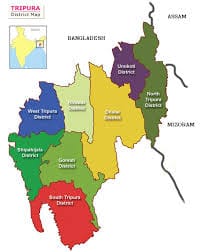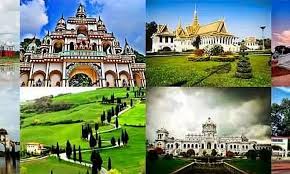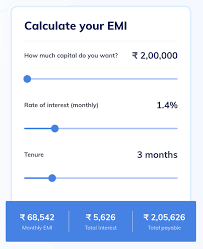History of Tripura and the Beginning of Human Settlement in Tripura

History of Tripura and the Beginning of Human Settlement in Tripura
Tripura, one of the ancient states of Northeast India, has a rich and diverse history that stretches back thousands of years. Surrounded by hills, rivers, and fertile valleys, the land of Tripura has witnessed the rise and fall of kingdoms, the blending of cultures, and the continuous flow of human migration. The history of Tripura is deeply connected with its tribal communities, archaeological findings, ancient chronicles like the Rajmala, and influences from neighboring regions such as Bengal, Myanmar, and Southeast Asia.
In this article, we will explore the early human settlements in Tripura, the ancient dynasties, the cultural evolution, and how the state gradually transformed into a modern political entity.
Early Human Settlement in Tripura
Prehistoric Period
Archaeological evidence suggests that Tripura has been inhabited since prehistoric times. Stone tools, pottery, and remnants of early settlements found in different regions indicate that human beings lived here as early as the Neolithic age.
The Gomati River valley and the Atharamura hill ranges are considered to be some of the earliest sites of human habitation.
The people of this era were mostly hunters and gatherers who gradually adopted agriculture and settled near rivers and fertile lands.
Migration and Tibeto-Burman Influence
The majority of Tripura’s indigenous population belongs to the Tibeto-Burman language group. Historians believe that these groups migrated from Southeast Asia and Southern China thousands of years ago.
These early settlers were experts in jhum cultivation (shifting agriculture).
They lived in clans and tribes, and their cultural practices included animism, ancestor worship, and nature worship.
Early Tribal Communities
Some of the earliest tribes who settled in Tripura include:
Tripuri (Debbarma) – The largest tribal group, believed to be the original inhabitants.
Reang (Bru) – Known for their unique dances and music.
Jamatia – A warrior tribe with a long history of service in the royal army.
Chakma, Halam, Mog, and Lusai – Migrated at different times, enriching the ethnic diversity of Tripura.
These groups formed the foundation of Tripura’s demography and culture, which continues to influence the state even today.
Ancient History of Tripura
The Kingdom of Tripura
The history of Tripura as a political entity dates back to the formation of the Tripuri Kingdom, ruled by the Manikya dynasty. According to the royal chronicle Rajmala, the kingdom was established more than 1000 years ago.
The Manikya kings claimed descent from the mythical lunar dynasty of the Mahabharata.
The first historical king was Ratna Manikya I (1464–1489 CE), who consolidated power and expanded his kingdom.
Rajmala – The Royal Chronicle
The Rajmala, composed in the 15th century in Bengali and Kokborok, is the most important source of Tripura’s ancient history. It documents the reign of 184 kings, blending mythology with historical facts.
It describes the origin of the Tripuri people, their battles, alliances, and cultural practices.
While not always historically accurate, the Rajmala provides invaluable insight into the traditions and governance of the kingdom.
Expansion of the Kingdom
The Tripuri kings extended their rule beyond the present borders of Tripura. At its peak, the kingdom included:
Large parts of Sylhet, Comilla, Noakhali, and Chittagong (present-day Bangladesh).
Parts of Assam and Mizoram.
This shows that Tripura was once a powerful state with strategic importance in the region.
Medieval Period of Tripura
Hindu Influence and Cultural Transformation
From the 13th century onward, Tripura came under the influence of Hinduism, particularly Vaishnavism and Shaivism. The kings adopted Hindu rituals, though tribal practices continued alongside.
Temples like Tripureshwari Temple (one of the 51 Shakti Peethas) became important centers of worship.
The royal family patronized Sanskrit literature, art, and architecture.
Relations with Bengal Sultanate and Mughals
During the medieval period, Tripura had frequent interactions—sometimes friendly, sometimes hostile—with the Bengal Sultanate and later the Mughal Empire.
The Tripuri kings often fought against Bengal rulers to defend their territory.
By the 17th century, Tripura paid tribute to the Mughals but maintained a significant degree of autonomy.
Social and Cultural Life
Medieval Tripura witnessed the growth of:
Jhum-based agriculture as the economic backbone.
Rich oral traditions of folktales, ballads, and dances.
Artistic expressions like handloom weaving and wood carving.
Colonial Era in Tripura
British Influence
Tripura was never directly annexed by the British East India Company, but it became a princely state under British suzerainty in the 19th century.
The Tripuri kings retained internal control, but foreign policy and defense were guided by the British.
The British encouraged administrative reforms and revenue systems in the kingdom.
Raja Bir Chandra Manikya (1862–1896)
Raja Bir Chandra Manikya, known as the “Maker of Modern Tripura,” introduced many reforms:
Modern education system and the establishment of schools.
Patronage of Bengali literature and culture, especially Rabindranath Tagore.
Development of Agartala as the new capital city.
Role During India’s Freedom Movement
Although Tripura was a princely state, many of its people supported the Indian independence movement. The royal family maintained friendly ties with Indian nationalists, and after independence, Maharani Kanchanprava Devi ensured Tripura’s smooth transition into the Indian Union.
Integration with India
Merger Agreement (1949)
After India’s independence in 1947, Tripura remained a princely state for a short time. In October 1949, Tripura officially merged with India.
The last king, Bir Bikram Kishore Manikya, had passed away earlier, and his widow, Maharani Kanchanprava Devi, signed the merger on behalf of the minor prince.
Tripura became a Union Territory in 1956 and later attained full statehood in 1972.
Post-Independence Developments
Large-scale migration from East Pakistan (now Bangladesh) significantly changed the demographic composition.
Tribal rights, land reforms, and ethnic tensions became major political issues.
Today, Tripura is a multi-ethnic state with both tribal and non-tribal communities playing an important role in its development.
Culture and Heritage of Tripura
Festivals and Traditions
Kharchi Puja – Worship of 14 deities, blending tribal and Hindu traditions.
Garia Puja – A tribal festival celebrated for prosperity and good harvest.
Durga Puja – Widely celebrated by Bengali communities.
Language and Literature
Kokborok – The language of the Tripuri people, with a growing body of literature.
Bengali – The dominant language due to historical migrations.
Tripura has produced poets, writers, and scholars who enriched Indian literature.
Art, Music, and Dance
Folk dances like Hojagiri of the Reang tribe are internationally known.
Handloom weaving, bamboo crafts, and wood carvings represent the artistic heritage of the state.
Modern Tripura: A Blend of Past and Present
Tripura today is a blend of ancient traditions and modern aspirations. While its tribal heritage remains strong, the state has also embraced urbanization, education, and democratic governance.
The legacy of the Manikya dynasty is still visible in palaces like Ujjayanta Palace and temples like Tripurasundari Temple.
The struggles of migration, ethnic conflicts, and political movements have shaped its recent history.
With progress in infrastructure, connectivity, and tourism, Tripura is carving a new identity in modern India.
Conclusion
The history of Tripura is a fascinating journey through time, beginning with prehistoric human settlements, tribal migrations, and the rise of the Tripuri Kingdom under the Manikya dynasty. From ancient cultural exchanges to medieval Hindu influence, from British indirect control to integration with the Indian Union, Tripura’s past reflects resilience, adaptability, and diversity.

Jobs Tripura is a Professional Educational Platform. Here we will provide you only interesting content, which you will like very much. We’re dedicated to providing you the best of Educational , with a focus on dependability and Jobs . We’re working to turn our passion for Educational into a booming online website












Post Comment